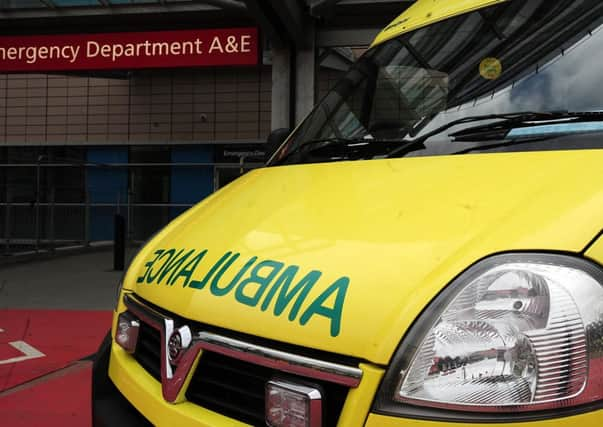143 ambulances didn’t have paramedics on board


The Northern Ireland Ambulance Service confirmed that between January and June 2013, 143 emergency ambulance shifts in the Western Trust area were covered by either a double technician crew or crews consisting of technicians and paramedics who hadn’t completed training.
In a statement to the Sentinel, NIAS, said: “In the six month period from January 1 to June 30, 2013, NIAS had planned to provide 20,822 A&E crews to deliver our service.
Advertisement
Hide AdAdvertisement
Hide Ad“Of this 20,822, 1.6 per cent (327) were double Emergency Medical Technicians (or EMT and Paramedic In Training) crews.
“In the Western Trust area, for the same period, 4,413 crews were planned of which 143 (3.24 per cent) were double EMT (or EMT and Paramedic In Training) crews.”
According to the NIAS emergency ambulances are supposed to be staffed by two workers, one of whom should be a paramedic.
The NIAS said: “Our vision is one of being a paramedic led service and the Trust aims to ensure that every A&E vehicle is crewed by a skill mix of Paramedic and EMTs and that Category A (life threatening calls) are responded to by a Paramedic.
Advertisement
Hide AdAdvertisement
Hide Ad“There are times, as a result of sickness or other absence, that a Paramedic may be unavailable and rather than deplete ambulance cover in a particular area, the Trust may crew two EMT together or, on some occasions, an EMT with a Paramedic in Training. However this would only be done after all other options have been explored.
“EMTs are qualified to a high level of clinical care and have a network of additional support behind them, should it be required, including Rapid Response Paramedics and Station Officers.”
As it stands qualified technicians must have two years post qualification experience to train to become a paramedic. That training is supposed to take 10 to 12 Weeks.
Following a revolution in A&E ambulance provision a number of years ago, ambulances often now follow smaller Rapid Response Vehicles (RRV) with experienced paramedics on board, to emergency call-outs.
Staffing ambulances with EMTs only could result in patients being transported to hospital without paramedics on board to provide care.